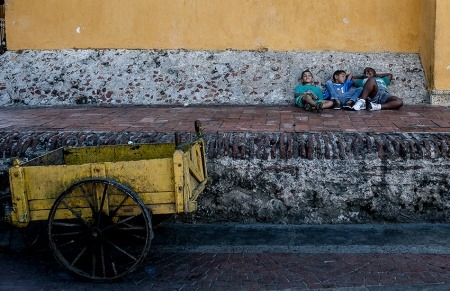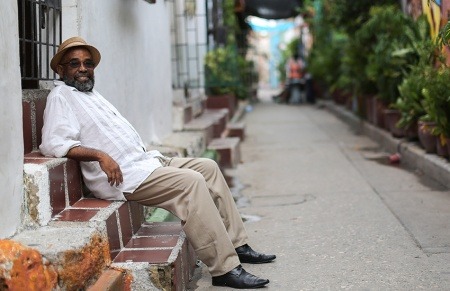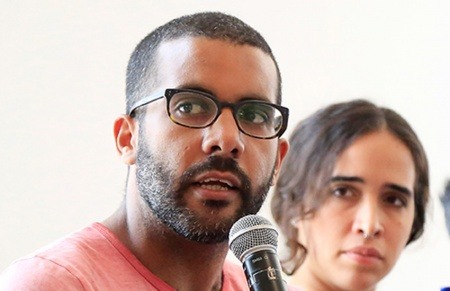Immortalized by Gabriel Garcia Marquez, the heroic Cartagena is translated into a less fantastic reality beyond the walls that enclose the city. A few meters from postcard stripped scenario is Pedro Blas Julio Romero who runs at will as the authority of the letters. Responsible for portraying verses violence of the guerrillas and the Colombian army, the 67 year old poet is also one of the main activists to denounce the flagrant gentrification process in Getsemaní, historic district that he describes as a place «castrated of sun»
Imortalizada por Gabriel Garcia Márquez, a heroica Cartagena das Índias é traduzida em uma realidade menos fantástica além das muralhas que enclausuram a cidade. A poucos metros do cenário descascado de cartão postal, é Pedro Blas Júlio Romero quem circula à vontade como autoridade das letras. Responsável por retratar em versos a violência das guerrilhas e do exército colombiano, o poeta de 67 anos é também um dos principais ativistas a denunciar o flagrante processo de gentrificação em Getsemaní, bairro histórico da cidade, alvo da voracidade da especulação imobiliária que o faz “castrado de sol”.
A young man approaches the backyard porch where hanging clothes dry in the sun. His white shirt and red cross in the bag states a conviction: the disease inhabits the house. She is there to administer vaccines, explains to a relapse woman in a chair. There is no answer, just a mumble inaudibly, disbelieving. In front of her, another old and squalid lady lays entertained with wisps of her ragged dress. Without annoyance or compassion, the nurse pulls a chair, scribbles notes and offers ampoules as if she was selling encyclopedias.
El periodista brasilero, Antonio Pita, becario de la más reciente versión de la Beca Gabriel García Maárquez de periodismo, alienta a sus colegas a participar en la próxima edición de este programa que se llevará a cabo en 2017.



